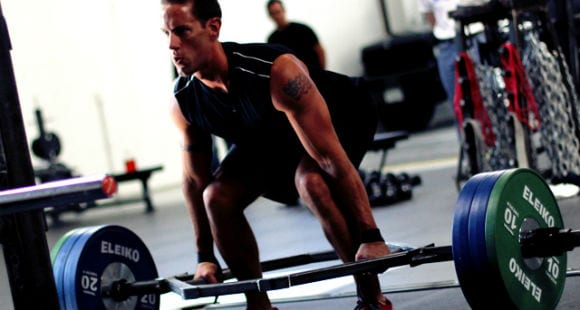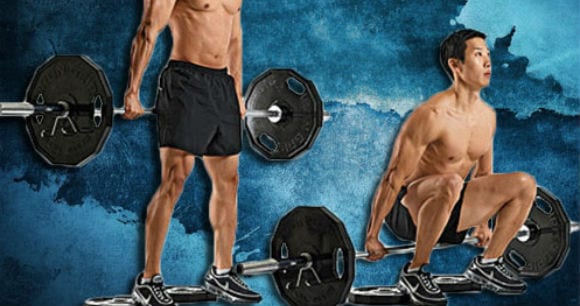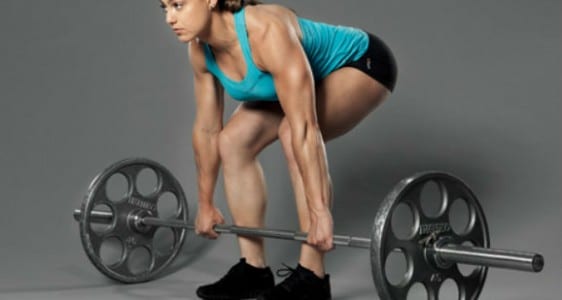Deadlifts: 7 Variants You Must Know
Just entered the world of training?
Even if you are new, you will have heard of this extremely common exercise practiced by bodybuilders and gym lovers. However, if you are a beginner in weightlifting, just the word "deadlift" can seem daunting. All you need to know is that this exercise is on the podium as one of the main exercises to improve your appearance in a tank top ...
The truth is they can benefit all kinds of levels of fitness as well cause damage if done incorrectly, in which case you should stop IMMEDIATELY.
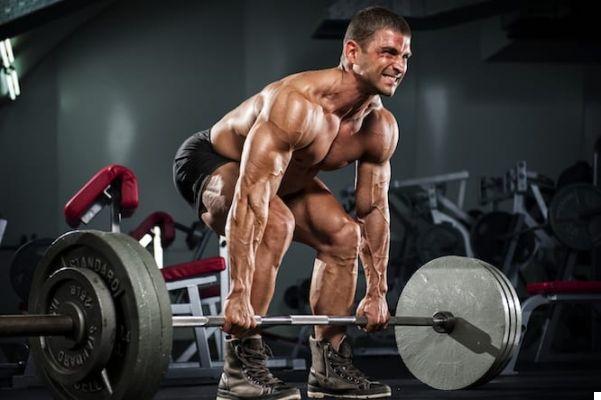
In fact, the so-called "deadlifts" (in English) are one of the few movements that affects all major muscle groups in the body and depending on the variant it can work on your lower back, hamstrings, glutes, calves, quadriceps and even the upper back and arms, with greater emphasis on the trapezius, sacrospinal muscles and buttocks.
So why stop ?! Everyone hits a wall, a deadlock where you simply can't lift more weight. Adding 1 kg seems like adding 10! You have to put down the bar and try a different approach. Just do the classic deadlifts and start performing variations. Try sumo or tight legged and your max will soon go in the right direction.
Put down the barbell and look at it from a different perspective, insert these variations into your training plan and then go back to the classic deadlifts and you will feel stronger, faster, more powerful. Then you will thank me ...
Different Types and Variants
Like many exercises, there are different variations of deadlifts and in the end it's up to you to decide which type is your favorite and more suited to your goals, your strengths and weaknesses.
1. Deadlift Sumo
Eat the sumo squat, they consist of placing your feet at a greater distance, with your hands inside your feet.
They can be performed with an emphasis on the quads or hips and involve a movement that will allow you to lift more loads, but remember, exercise makes perfect.
Start by using low loads.
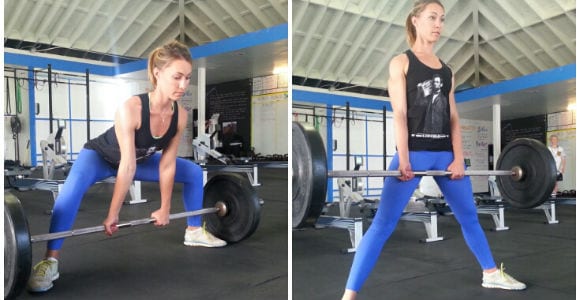
2. Deadlifts with Trap Bar
This type of deadlift is performed with a special barbell.
Using the Trap Bar you can modify the mechanism and lift by distributing the weight evenly.
3. Snatch
A wide grip is used in snatches.
The snatch is a type of Olympic lift that mainly works the hamstrings. The snatch strengthens the movement of the snatch.
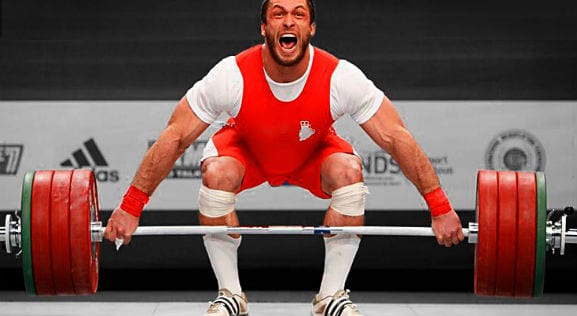
4. Straight Leg or Stiff Leg Deadlifts
Sometimes also called "stiff-legged", this variant focuses on the use of hamstrings, unlike the others, which focus on the lower back.
When they run, the back must remain straight and the movement comes from the torso, this means that instead of bending the knees, the legs must remain rigid during the lifting phase of the movement and also when resting the barbell on the ground.
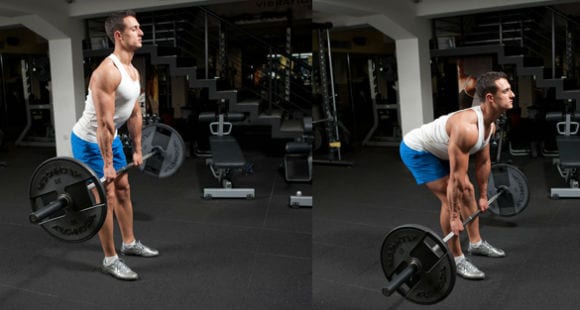
5. Deadlift with Deficit / Rack Pulls
These exercises they work by increasing or decreasing the range of motion during exercise. The former are famous for being a brutal movement, as a conventional or snatch-type grip can be used.
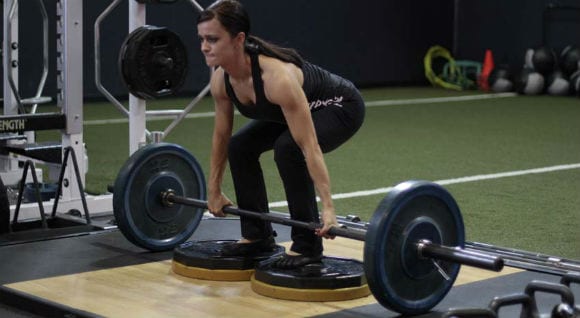
6. The Lifting Hack
The hack lift focuses on the quadriceps. To perform it you need to place the barbell behind your back, imitating the classic execution.
Anyway, hack lifting is also known to be one of the riskiest variants, placing additional stress and strain on your knees, you should consequently introduce this exercise into your program occasionally and if you are experienced.
7. Classic deadlifts
Now is the time to get back on the saddle and show the strength, power and technique you have acquired. The classic deadlift is the exercise you should start with if you are a beginner.
When you perform this exercise, your hands should be placed just after the feet, on the sides of the hips. Normally they are performed with barbell or dumbbells and work the lumbar area, calves, forearms, hamstrings, dorsal, back, quadriceps and trapezius.
The Best
Well, you just learned the deadlift variations, but which one is best for you?
The best ones ultimately depend on which movement you can perform with excellent execution and a neutral spine.
Maintaining a neutral position of the spine is the most important factor while performing deadlifts, it allows for adequate mobility and safety.
For beginners, the best variant is the straight leg deadlift. Once you are comfortable with the movement, the trap bar is the next step as the barbell structure and handles can help you master deadlifts. minimizing the required range of motion and the likelihood of injury.
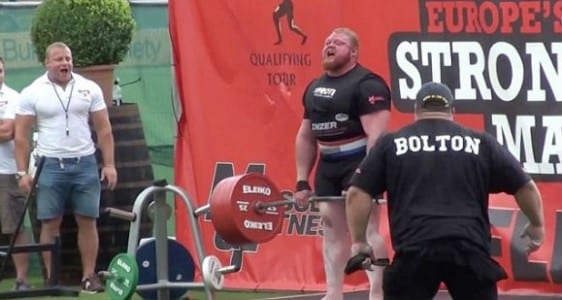
If the trap bar isn't available, sumo or classic deadlifts are the next step. However, groin strength and hamstring flexibility can become limiting factors in both of these movements, as hip mobility and hamstring strength are two vital requirements to perform these deadlifts with correct execution.
Finally, the progression from trap to conventional deadlift depends on mobility and strength.
execution
So far, by reading this article, you've probably heard of "Correct execution" mentioned in every paragraph, really this is the most important thing to consider when doing deadlifts, both for safety and to maximize results.
When performing deadlifts, start by standing with a stance slightly narrower than shoulder width.
- Bend your knees and start by using a grip with the palms facing down.
- Grab the barbell so that your arms are vertical to the floor.
- While keeping your back as straight as possible, flex your knees and push on your heels making sure your torso is vertical, with your chest out and your shoulder blades in line with the bar.
- Lift your chest but don't squeeze your shoulder blades, keep your shoulders and chest out.
As you lift the bar above your knees, contract your glutes by bringing them behind the bar. Once you reach the top of the movement, don't lean back and make sure your chest is out.
- A common mistake and a misconception when doing deadlifts is to look at the ceiling with the chin pointing up, the head and neck should be positioned in line with the rest of the spine.
- To return to the starting position flex your knees, bending your chest and torso forward as you push your buttocks back.
Generally for the classic deadlifts there are several factors to take into consideration:
All weight should be borne by the heels and midsection of the feet - to be sure of this, you should be able to move your fingers freely.
Your body should move up and down at the same speed - in other words, the chest and buttocks should rise and move together at the same speed.
Keep your chest straight and guide the movement with your heels.
Keep your arms straight - they are there to hold the bar and should never pull or bend.
Keep the bar close to your body - don't let it go forward.
As you lift, contract your glutes! - Once the barbell passes your knees, think about it. Push towards the floor with your feet and once you reach your knees, contract your glutes behind the bar. Many people do not use their glutes during movement, putting more stress on their back.
In the upper part of the movement, stand with your chest out- do not go back and do not stretch your back.
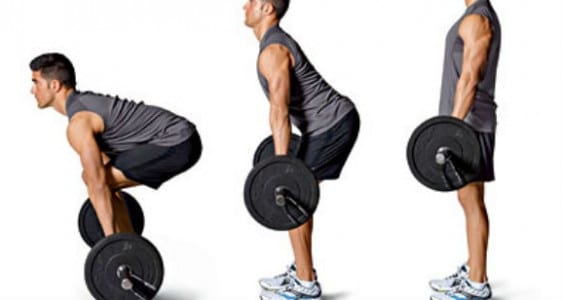
Risks and Errors
Deadlifts can be simple once you have mastered the execution, however, it is not an exercise to be taken lightly as it is just as easy to get injured.
Due to movement and biomechanics, they should be performed with caution, especially for individuals with back pain. To do this, practice both with and without the barbell. Once you have mastered the execution make sure you consistently progress with the weight, lifting too much and too soon is the recipe for disaster.
While you never have a lot of time to go to the gym and train, it's worth pausing to analyze your execution, if not film yourself and analyze your weaknesses. You may seem silly but believe me, you will look worse by performing the movement incorrectly and risking injury.
The eccentric part (putting the bar down) should not be neglected as it is more risky than the concentric part (lifting the bar), and it is the part of the exercise that will cause muscle cramps. Try not to let go of the bar, put it down and practice placing the bar with the correct movement and execution.
A tip not to be forgotten
When considering what kind of deadlifts to perform, such as diet, variety is better. By varying the type we will gain both strength and hypertrophy. Overall, the best variant depends on which muscle you want to train and what your goal is. Experiment and find which exercises offer you the best execution and technique for your body.




